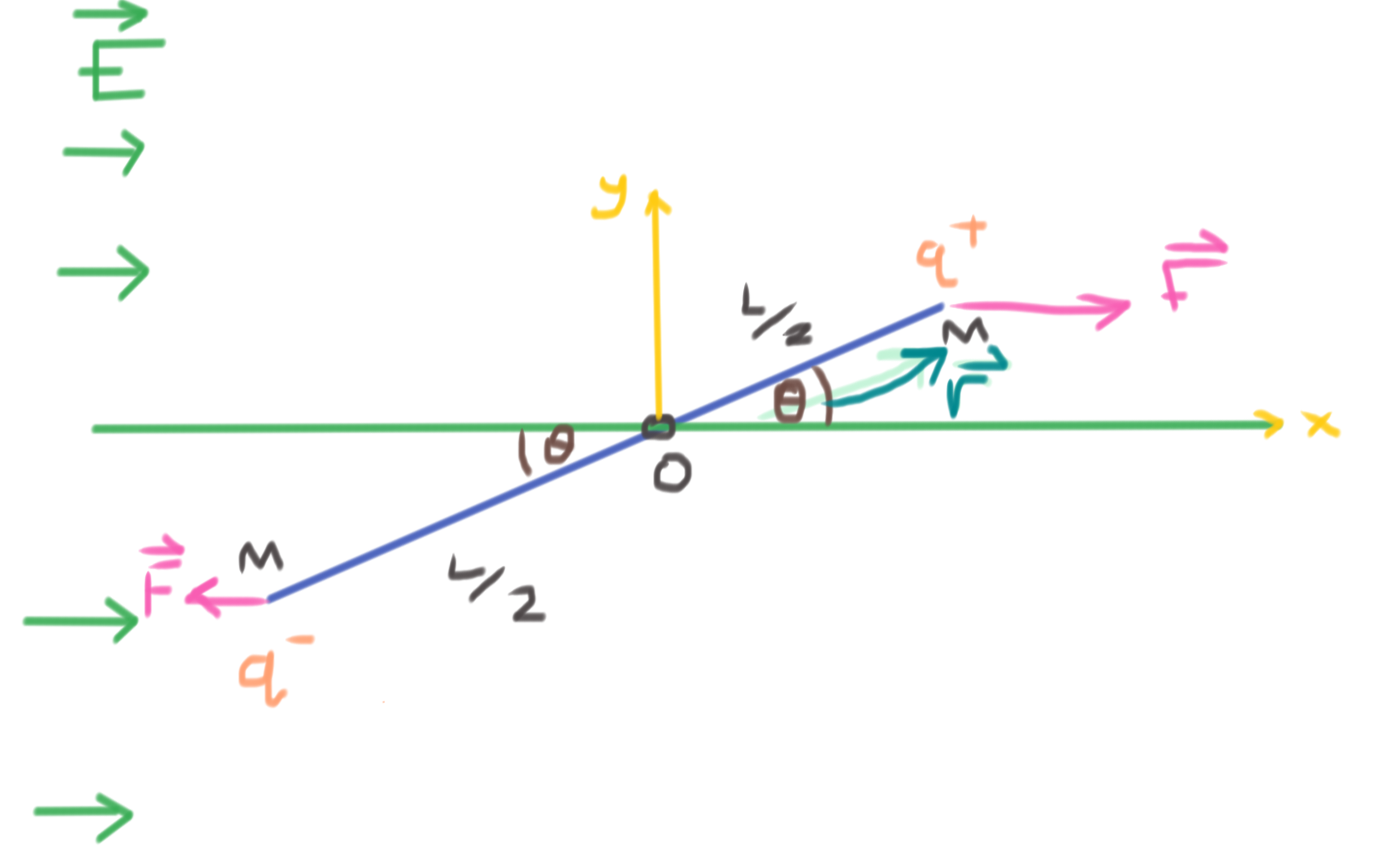There is a specific formula for the dipole moment and torque but we can sorta derive that as we go along:

We start with Newton's 2nd Law for circular motion: #mathbf tau = I mathbf alpha qquad star#
We place the origin at the mid point and exploit the symmetry and for minimum time we arrange the positive and negative charges as shown. The torque is:
#mathbf tau = 2 xx (mathbf r xx mathbf F) #
#mathbf r = ((L/2 cos theta),(L/2 sin theta))# and #mathbfF = ((Eq),(0))#
#implies mathbf tau = - LEq sin theta \ mathbf e_z#
The inertia for 2 point masses is #2 xx M (L/2)^2 = (ML^2)/2#
And so from #star#:
# - LEq sin theta \ mathbf e_z= (ML^2)/2 ddot theta \ mathbf e^z#
We make the usual linearisation assumption, #theta approx sin theta# for small #theta# and we get this DE:
# ddot theta + (2Eq)/(ML) theta = 0# which is in usual form: #ddot theta + omega^2 theta = 0#
So period #T = (2 pi) /omega = 2 pi sqrt( (ML)/(2Eq) ) #
This has been linearised to simple harmonic motion (we have a linear restorative torque), and the minimum time #tau# for the arrangement to first go through the equilibrium point (ie where #theta = 0#) is #tau = T/4 = color(blue)(pi/2 sqrt( (ML)/(2Eq) ))#
I'd roll with (3) ... unless you see a mistake :)


